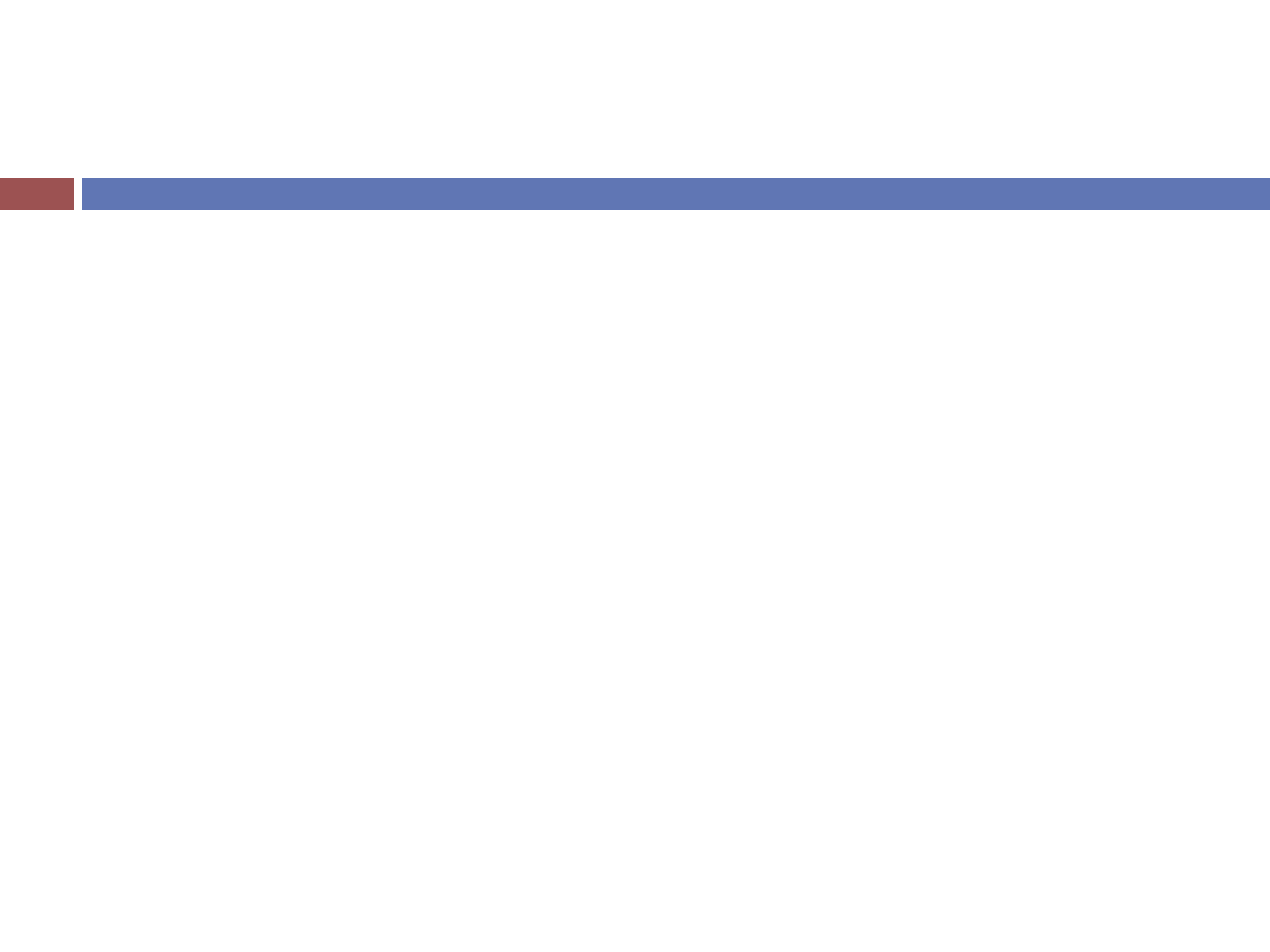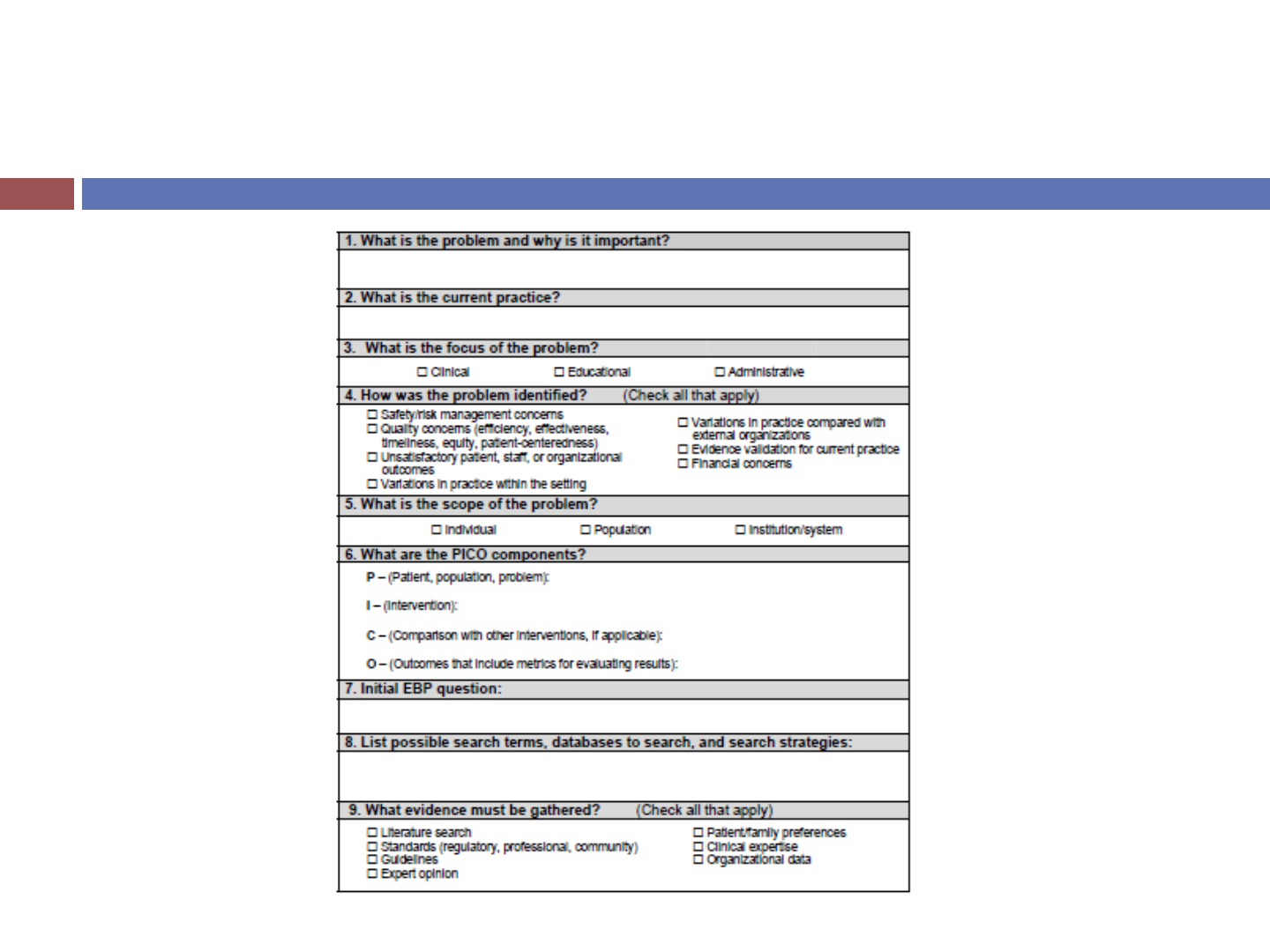
SESSION 2:
DEVELOPING AN ANSWERABLE PICO QUESTION
CONDUCTING A SYSTEMATIC LITERATURE REVIEW
Tam H Nguyen, PhD, MSN/MPH, RN

Developing an Answerable PICO Question

The Practice Question: PICO
You want to unlock the
answer to the right
question
The question drives the
search strategy
Asking the right question
takes thoughtfulness, it
may take time, and can be
challenging
Some things to consider:
Background questions
General, state of the science
Evidence review can be complex
Example: “What are the best
nursing interventions to prevent
falls for older adults?”
Foreground questions
Focused
Has specific comparison
Example: “Are bed alarms or
hourly rounding more effective for
preventing falls among older
adults?”

Format of PICO questions
Population
Includes attributes such as age, gender, or healthcare problem/setting
Intervention
Can be a treatment, intervention (i.e. educational), process of care, or assessment
approach
Comparison
Determine if a meaningful comparison exists. Not all questions have comparison, it might
be usual care
Outcome
Clinically meaningful endpoint. It could be QOF, cost, pt satisfaction, pain, length of stay,
etc. All outcomes have a metric
Time
Time it takes to demonstrate outcome

How PICO questions are formed
(Dearholt & Dang, 2012)
Problem Focused
Financial concerns
Clinicians questioning
current practice
Quality concern
Safety concern
Variation in practice
identified
Knowledge Focused
New evidence
Clinicians at the bedside
are in key positions to
form PICO questions
Often these PICO
questions are refined in
inter-professional teams
Priority is then assigned
to certain questions

How Research & PICO questions are formed
Key idea is that the question NEEDs to be
answerable
Importance of asking the right question, and the
consequence of not asking the right question (i.e.
VIOXX example)

Templates for PICO questions (Melnyk & Fineout-
Overholt, 2010)
For an intervention/therapy:
In _______(P), what is the effect of _______(I) on ______(O)
compared with _______(C) within ________ (T)?
Example: In adult patients with total hip replacements (P) how
effective is PCA pain medication (I) compared to prn IM pain
medication (C) in controlling post operative pain (O) during the
perioperative and recovery time (T)?
Example: In urban African Americans with hypertension (P), does
telelmonitoring blood pressure (I) compared to usual care (C)
improve blood pressure control (O) within the six months of initiation
of the medication (T)

Templates for PICO questions (Melnyk & Fineout-
Overholt, 2010)
Diagnosis or diagnostic test:
Are (is) _________ (I) more accurate in diagnosing
________ (P) compared with ______ (C) for _______
(O)?
Example: Is a PKU test (I) done on two week old infants
(P) more accurate in diagnosis inborn errors in
metabolism (O) compared with PKU tests done at 24
hours of age (C)?

Templates for PICO questions (Melnyk & Fineout-
Overholt, 2010)
Prevention:
For ________ (P) does the use of ______ (I) reduce the
future risk of ________ (O) compared with _________
(C)?
Example: In OR nurses doing a five minute scrub (P)
what are the differences in the presence and types of
microbes (O) found on natural polished nails and nail
beds (I) and artificial nails (C) at the time of surgery
(T)?

Common mistakes I see
Too much variation in what the “intervention” looks
like
Not focusing on key outcomes

Share some of your burning PICO questions
Practice: At the end of this session we will have 20
minutes
to come up with a burning question in the
PICO format

Systematic Literature Review

Why do a Systematic Literature Review
It is one of the most important steps in an EBP project (&
in research); it helps us know what is known/unknown
Explosion of information makes it difficult for us to
process all relevant literature
If nurses only search a single resource, journal, or
database, they will likely miss important evidence
Important to work with librarians and learn how to
search proprietary data-bases

Ok, I did a systematic review… now what?
Screen the references for relevance
By reading the title & abstract
Access relevant full articles
Read the articles to make sure it is indeed relevant to
PICO question
Review the article and make judgments about the worth
of the study’s evidence
Summarize the “body” of evidence you find (i.e. the
articles you select to include in your EBP)

Mistakes I see…
Not capturing all relevant studies (i.e., cherry
picking)
Double dipping (i.e., including primary studies that
were included in systematic reviews)
Not adequately documenting search strategy

PICO search worksheet: Practice!

Appendix B: Question Development Tool

